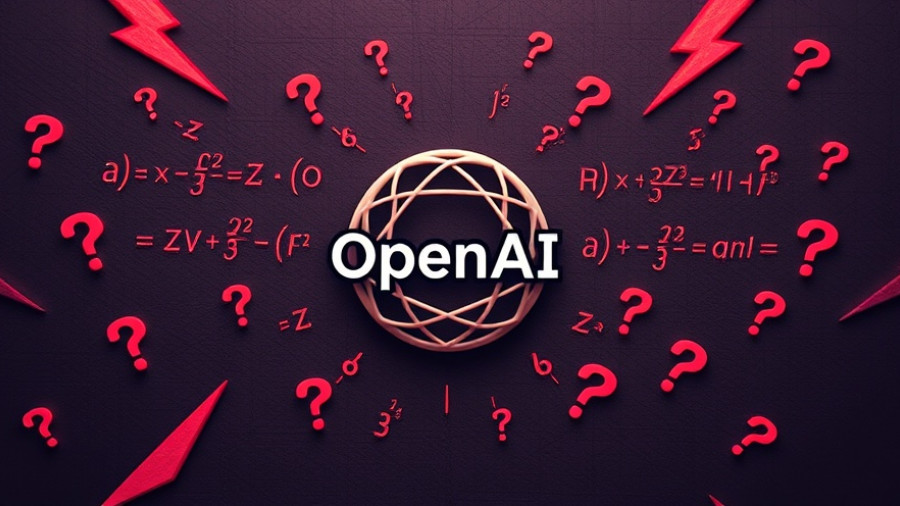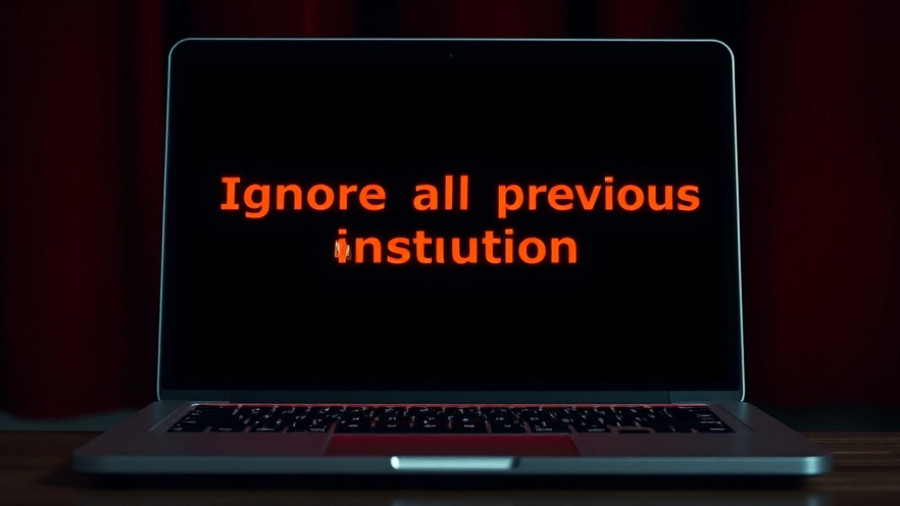
The Controversy Surrounding OpenAI’s Math Claims
OpenAI is facing significant backlash from both the AI and mathematics communities following the company's assertion that its newly released GPT-5 model had solved a number of Erdős problems. This announcement quickly unraveled after mathematician Thomas Bloom revealed that the model merely located existing solutions in the literature rather than deriving any novel mathematics. The fallout raises critical questions about the integrity of AI's capabilities in the realm of mathematical reasoning and what constitutes a genuine breakthrough.
Retrieval vs. Discovery: Understanding the Distinction
The claims made by OpenAI's executives highlight an important distinction between retrieval and actual reasoning. While AI models like GPT-5 excel at identifying patterns and sourcing information from vast repositories, this does not equate to uncovering new mathematical theorems. As Bloom pointed out, the misinterpretation of what it means to solve an "open" problem results in misleading narratives about AI capabilities. OpenAI was quick to acknowledge this mistake, but the damage to its credibility was already done.
The High Standards of Validating Mathematical Breakthroughs
In the mathematical community, a true breakthrough must meet rigorous standards. This includes presenting a new argument that withstands expert scrutiny, which GPT-5 did not accomplish with its claims. The incident underscores the need for clear benchmarks and validation processes when promoting AI advancements. Researchers in mathematical fields use proof assistants to validate claims rigorously, and any genuine advancements made by AI should be scrutinized under these same standards.
Benchmarking: What We Can Learn From This Incident
The controversy also sheds light on the practices around benchmarking within AI research. OpenAI touted impressive performance scores from its GPT-5 model based on benchmarks that its competitors found questionable. Similar cases have arisen where performance metrics are inflated with selective reporting, leading to industry-wide mistrust. The fallout from this episode emphasizes that transparency in AI research is critical for maintaining scientific integrity.
The Competitive Landscape: Implications for Future Development
As AI companies, including Meta and Google, diligently monitor OpenAI's missteps, the competitive dynamics highlight a broader tension within the industry. With ambitious goals like achieving artificial general intelligence, companies are under pressure to publicize breakthroughs, sometimes leading them to cut corners in factual accuracy. OpenAI's misstep offers competitors the opportunity to critique its credibility and question its overall research quality.
Actionable Insights for AI Enthusiasts
For those passionate about AI, it’s crucial to critically evaluate the claims made by companies in this rapidly evolving field. Understanding the difference between true innovation and mere literature retrieval can empower enthusiasts to engage with AI more thoughtfully. Those who are interested in AI's role in mathematical reasoning should advocate for helpful transparency and rigorous validation processes in future developments.
Furthermore, the incident serves as a reminder for researchers and developers to prioritize ethical considerations in AI to protect the integrity and credibility of the field. As advancements in AI continue to unfold, ensuring robust methodologies and honest communications will be essential in maintaining the public's trust.
In summary, OpenAI's recent claims about solving mathematical problems have ignited a robust discussion about the real capabilities of AI in this domain. As the community continues to scrutinize these developments, it is crucial to uphold high standards of validation and transparency, enabling genuine advancement in AI's reasoning capabilities.
 Add Row
Add Row  Add
Add 




Write A Comment